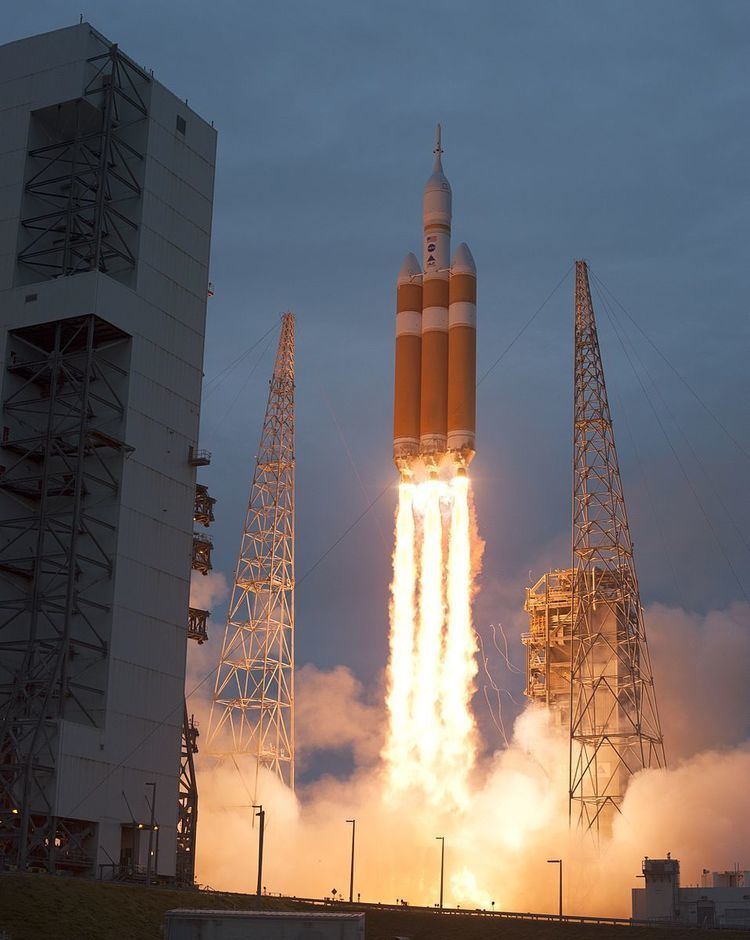Mission type Uncrewed test flight COSPAR ID 2014-077A Mission duration 4 hours, 24 minutes | Operator NASA SATCAT no. 40329 Orbits completed 2 | |
 | ||
Exploration Flight Test 1 or EFT-1 (previously known as Orion Flight Test 1 or OFT-1) was the first test flight of the Orion Multi-Purpose Crew Vehicle. Without a crew, it was launched on December 5, 2014, at 12:05 UTC (7:05 am EST), by a Delta IV Heavy rocket from Space Launch Complex 37B at Cape Canaveral Air Force Station.
Contents
The mission was a four-hour, two-orbit test of the Orion crew module featuring a high apogee on the second orbit and concluding with a high-energy reentry at around 20,000 miles per hour (32,000 km/h; 8,900 m/s). This mission design corresponds to the Apollo 4 mission of 1967, which validated the Apollo flight control system and heat shield at re-entry conditions planned for the return from lunar missions.
NASA heavily promoted the mission, collaborating with Sesame Street and its characters to educate children about the flight test and the Orion spacecraft.
Objectives
The flight was intended to test various Orion systems, including separation events, avionics, heat shielding, parachutes, and recovery operations prior to its debut launch aboard the Space Launch System, currently scheduled for no later than November 2018.
Vehicle assembly
EFT-1 Orion was built by Lockheed Martin. On June 22, 2012, the final welds of the EFT-1 Orion were completed at the Michoud Assembly Facility in New Orleans, Louisiana. It was then transported to Kennedy Space Center's Operations and Checkout Building, where the remainder of the spacecraft was completed. The Delta IV rocket was put in a vertical position on October 1, 2014, and Orion was mated with the vehicle on November 11.
Flight
The four and a half hour flight took the Orion spacecraft on two orbits of Earth. Peak altitude was approximately 5,800 kilometres (3,600 mi). The high altitude allowed the spacecraft to reach reentry speeds of up to 20,000 mph (32,000 km/h; 8,900 m/s), which exposed the heat shield to temperatures up to around 4,000 °F (2,200 °C).
During the flight, the crew module, a structural representation of the service module, a partial launch abort system containing only the jettison motor, and Orion-to-stage adapter would be evaluated. The spacecraft remained attached to the Delta IV's upper stage until reentry began and relied on internal batteries for power rather than photovoltaic arrays, which were not contained in the structural representation. Data gathered from the test flight will be analyzed by the Critical Design Review (CDR) in April 2015.
After splashdown in the Pacific Ocean, crews recovered the EFT-1 Orion crew vehicle and will outfit the capsule for an ascent abort test in 2017.
